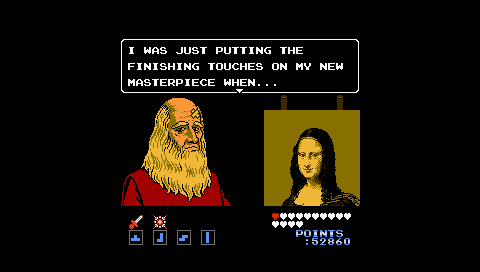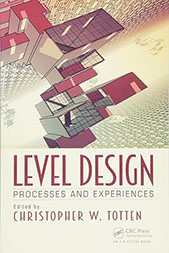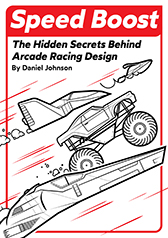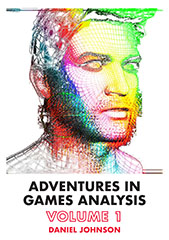Startropics and Other Recent Business
October 21st, 2016
A few months ago I played through Startropics with my friends over at the VG Commune. We recorded a couple of podcasts together and I also wrote up a rough photo diary of the two Startropics games. In the first podcast we discuss static and dynamic gameplay mechanics and how the grid-based gameplay makes the game very clean. In the second podcast we zoom out from the minute-to-minute gameplay and observe the flow between the game’s chapters. I thoroughly enjoyed the discussion and I’m sure you will too. The photo diaries are a bit rough, but I think they’re worth sharing as well.
This isn’t the first time that I’ve podcasted with the VG Commune. We’ve previously discussed Super Mario Land 2 levels, optional challenges in Wave Race 64, and the nature of two-dimensional space in The Firemen. Greg, aka Golem, has also been putting together videos out of some of our Super Mario Land 2 level discussions, so I’d urge you to check them out and follow him for more videos in the series. Although the DP blog is relatively quiet at the moment, I have been working away in the background over the past few months, so as always stay tuned. 🙂
Ninja Gaiden Sigma – Orientating Oneself in Tairon
July 14th, 2016
https://www.youtube.com/watch?v=pqsPWM_ouIwWatch a few minutes of the video above. What do you notice about the nature of the environment? And what effect do you think these things would have on the player?
Here are some observations I made whilst playing:
- The wall textures look similar throughout Tairon.
- There are many realistically modelled doors, but most are static textures.
- Tairon consists of a network of winding pathways which branch out in multiple directions.
- The large hall near Military Gate looks appears to be a hub, but isn’t.
- It’s possible to dash around the rooftops, yet only about half of the visible accessible elevated areas are actually accessible.
- Blood splatters are non-permanent.
- When you revisit areas, fallen enemies respawn anew.
The visual and structural design, as well as the lack of permanency, make it difficult to orientate oneself within Tairon. Because most rooms are narrow and bendy in shape, it is harder for the player to define the room as a simple shape, a technique which is useful when organising the town layout into a mental schema (for example, “the big round room comes after the narrow walkway”). The samey texturing and lack of landmarks similarly deny the player the visual resources with which they can make each room in their mental model of Tairon distinct from the rest. The constant respawning of foot soldiers every second time the player returns to a room prevents one from using the presence of enemies as a means of monitoring their movement through the environment. And, finally, the doors and ledges deceive the player into investigating unnecessary dead ends. Tairon, as a site the player must traverse in various ways throughout the adventure, is a somewhat sluggish stop gap that punctuates the otherwise linear and forward-moving sets of Ninja Gaiden Sigma.
A Few Comments on Nano Assault EX (3DS)
July 9th, 2016
I guess my writing hiatus is officially over now, right? I’m currently working through old notes and drafts, and so some of the short-form pieces will find their way here. If you missed my tweets from a few months ago, I’ve written a 10,000 word chapter for an upcoming edited book titled Level Design: Processes and Experiences, which will be released at the end of the year. It was quite a project and I’ll have more to say about it later on. For now, a few bullet points on 3DS eShop shmup Nano Assault EX. This title was part of the second Nindies Humble Bundle, so if you bought in, then you’ll probably have it in your collection already.
Planetoid Levels
- Shin’en deserve credit for the visually attractive 3D planetoids. However, the majority of game mechanics (moving and shooting) and elements (enemies, hazards, collectables) aren’t designed or arranged to make use of the unique dynamics of the curved spaces (for example, blindspots in the curvature, variable levels of elevation, and uniquely shaped protrusions).
- A natural consequence of the curve-shaped planetoids is that a significant portion of the player’s immediate surroundings is often hidden from view. The myopic viewpoint paired with the game objectives of destroying every enemy in play, can make the process of scouting out that one remaining drone needlessly protracted.
- Since enemy nests spawn in from the sky when the player enters a designated space on the planetoid and there’s no hints telling the player where these prompts are located, the lack of feedback can make finding that final nest feel like aimless wandering.
- The two previously mentioned issues are exacerbated by the realistic momentum (i.e. slower movement speed) when climbing the ends of the frequent bone-shaped structures.
- Fortunately, the map marks enemy locations on the pause screen.
- When moving along the spherical protrusions of the planetoids, where your view is most limited, it’s easy for bullets fired from “around the curve” to catch you out with very little response time.
- Some enemies spawn right on top of you too, which results in insta-death.
Tunnel Levels
- In the tunnel levels, your movement and aiming are both tied to the circle pad. You slide the pad within a central bounding circle to aim and then push beyond that circle to move the ship. However, the lack of distinguishing tactile feedback blurs the inputs, making it difficult to aim more controlled shots.
- Also, because aiming is coupled with movement, you can’t move and shoot separately unless you’re aiming for something in the position you’re moving towards.
- As the camera is positioned behind the ship, your craft can often obscure bullets flying right towards you.
Bullets
- Your bullets tend to be crowded out by the enemy bullets and explosions, sometimes causing the action to get muddled in the cross-fire. In so many of these hectic confrontations, I was caught out by a stray bullet.
- The spread spray option kind of neuters aiming. It’s more like you’re aiming in general directions as opposed to targeting enemies.
3D Visuals
- The 3D harshly splits when you alter the viewing position slightly. I don’t think I’ve noticed this in other 3D games.
- With lots of objects flying towards the screen, it can be very distracting. Sometimes my brain tells me to duck when actually my focus should be towards the enemy ships.




 Game Design Companion: A Critical Analysis of Wario Land 4 - $7.99
Game Design Companion: A Critical Analysis of Wario Land 4 - $7.99 Level Design: Processes and Experiences
Level Design: Processes and Experiences Speed Boost: The Hidden Secrets Behind Arcade Racing Design - $5.99
Speed Boost: The Hidden Secrets Behind Arcade Racing Design - $5.99 Adventures in Games Analysis: Volume I - $5.99
Adventures in Games Analysis: Volume I - $5.99







